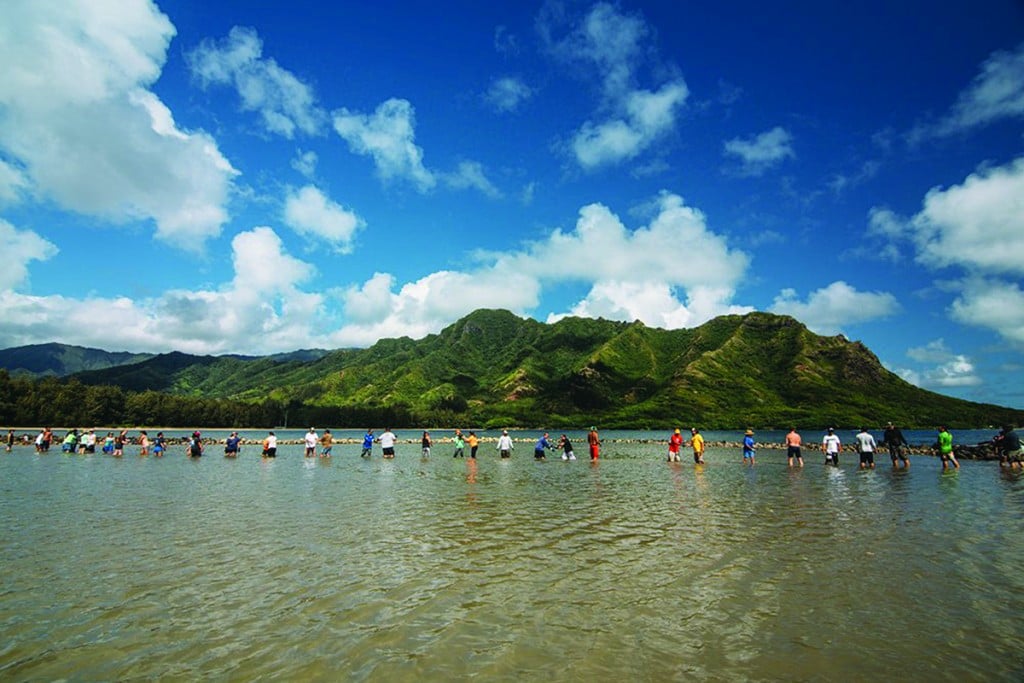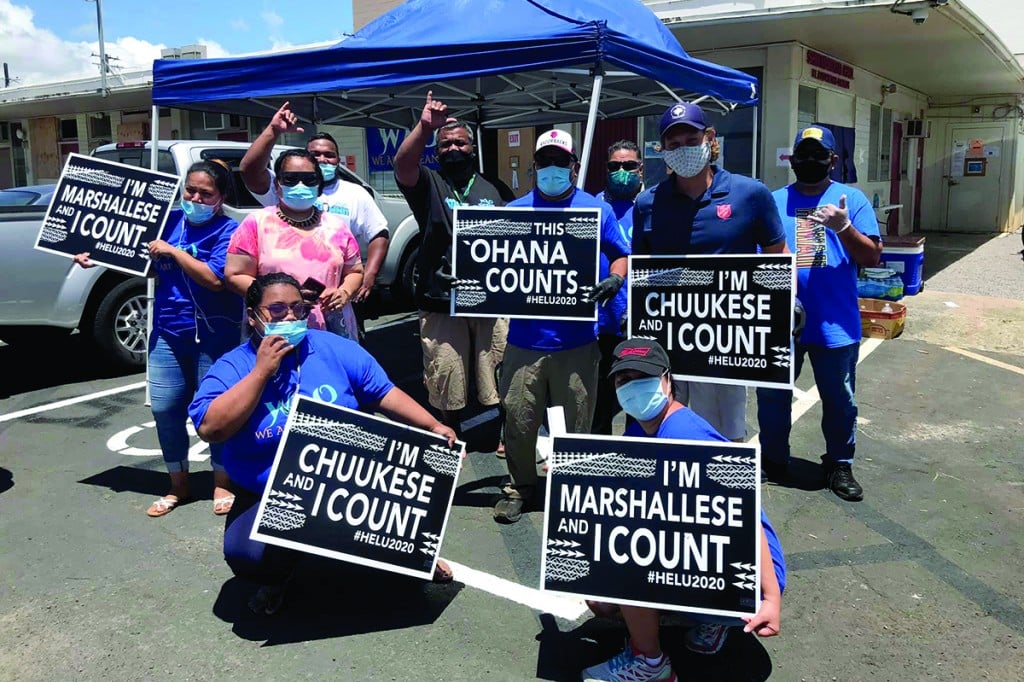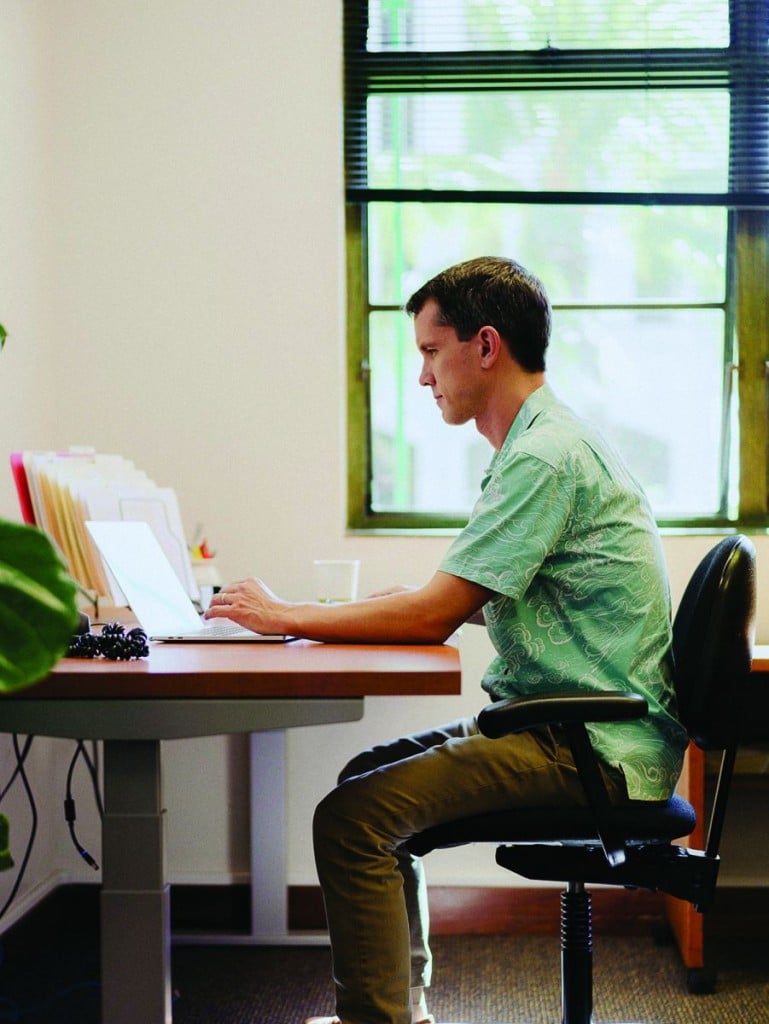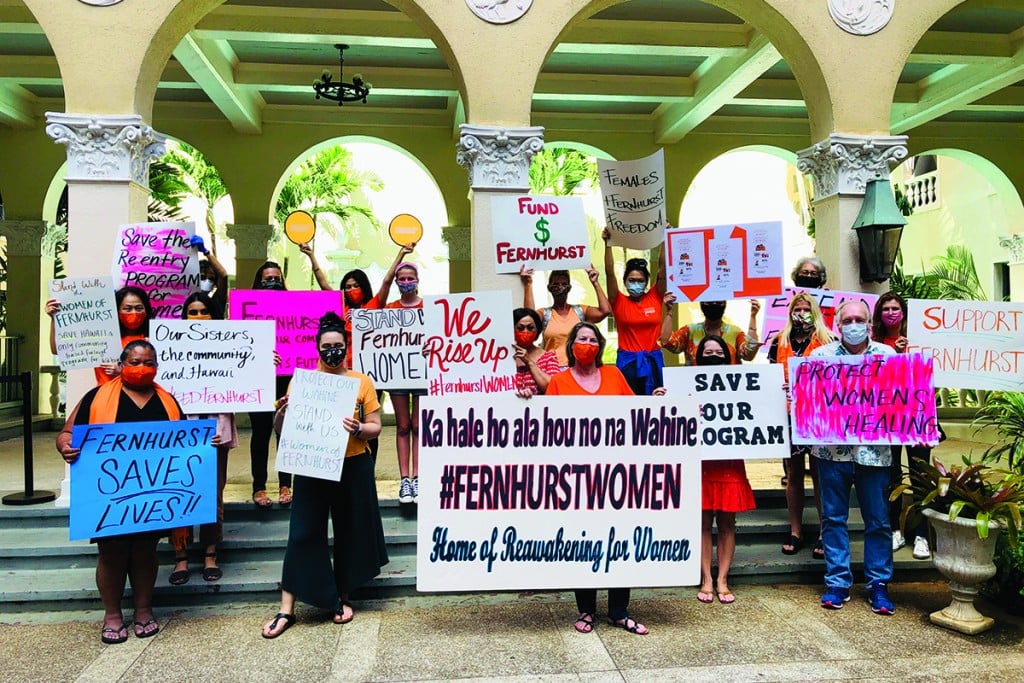Solutions for Kai (Nearshore Ocean), and Wai (Fresh Water): Steps to a Sustainable Hawai‘i
Creative approaches to achieving resource resilience add up to a better future for our Islands.

Living sustainably—responsibly stewarding local resources so a community thrives over the long term—was once part of every successful Island community. Water, both fresh and salt, is at the heart of a sustainable Hawai‘i. These two new water-focused initiatives aim to create a resource use system that is both abundant and wise.
Kai: Marine 30×30
For Hawai‘i residents, the ocean has been many things, including playground and passageway. But few realized how much we depend on food from its nearshore waters until 2018, when Conservation International released a study on Hawai‘i’s nearshore reef fisheries, both commercial and noncommercial. CI estimated that Hawai‘i’s nearshore fishers, the vast majority of whom are fishing for their families and communities, harvest about 1.2 million kilograms of food a year. That translates to more than 7 million meals. The health of the seas is closely tied, not only to ecosystem equilibrium, but to the health of many Hawai‘i households. As CI’s Jack Kittinger has said, “We are starting to realize that if these fisheries continue to decline, it will have a real impact on food security.”

Photo: Courtesy of Kua‘āina Ulu ‘Auamo
Hawai‘i’s Marine 30×30 Initiative is lead by the State of Hawai‘i Department of Land and Natural Resources and is part of a global network of initiatives to protect 30% of ocean habitats by the year 2030. To reach its part of that goal—sustainably managing 30% of the Islands’ nearshore waters by 2030—Hawai‘i will draw on both cultural knowledge and science.
Achieving 30×30 is a complex process that brings together many diverse voices—communities, fishers, legislators, government and philanthropists—to make decisions that work for both the community and the resource. In 2015, after more than a decade of support from the local community, Gov. David Ige signed into law Hawai‘i’s first Community-Based Subsistence Fishing Area in the waters off Hā‘ena, on Kaua‘i. The Hā‘ena CBSFA forbids most commercial fishing and allows most subsistence fishing. Several more CBSFAs have either been established or are under discussion.
Achieving 30×30 is a complex process that will involve getting many diverse voices—communities, fishers, legislators, government and philanthropists—to the same table to make decisions that work for both the community and the resource. In 2015, after more than a decade of work and support from the local community, Gov. David Ige signed into law Hawai‘i’s first Community-Based Subsistence Fishing Area, or CBSFA, in the waters off Hā‘ena on Kaua‘i. The Hā‘ena CBSFA ensures the sustainability of nearshore ocean resources through customary and traditional Native Hawaiian fishing practices, limits on harvesting of marine life, and the establishment of a refuge for the protection of juvenile fish. When the Board of Land and Natural Resources approved the rules in 2014, Keli‘i Alapai, a lifelong Hā‘ena resident and one of the Hā‘ena fishers who worked on the rules, explained in a press release: “We are simply asking that when you fish in our community, you respect our traditions and the way we fish. These rules are about feeding our families and our ability to pass on our traditions to our children and grandchildren.”
Wai: Fresh Water

Photo: Courtesy of Honolulu Board of Water Supply
Hawai‘i’s Fresh Water Initiative has a simple goal: to add an additional 100 million gallons per day to Hawai‘i’s potable water supply capacity by 2030. Convened by the Hawai‘i Community Foundation in 2013 and currently supported by 10 additional funders, the initiative was created to bring a coordinated effort around this fresh, drinkable water. Hawai‘i has an abundant supply of aquifer water, particularly on O‘ahu, but any resource can be spent down. The first Board of Water Supply in Hawai‘i was created to solve a water crisis in the 1920s, when artesian wells were allowed to run freely; some were beginning to salt up, others were running dry causing shortages and rationing.
With Hawai‘i’s population doubling since 1959, and annual rainfall decreasing by at least 18% over the last 30 years, HCF convened a council of diverse stakeholders to ensure the sustainability of Hawai‘i’s potable water supply used for drinking, gardening, washing cars and dishes and more. While each stakeholder was well-versed in different aspects of Hawai‘i’s water supply, a common goal was needed.
Having a philanthropic partner like HCF, which could facilitate the discussion, was critical, says Barry Usagawa, program administrator for the Water Resources Division of the Honolulu Board of Water Supply: “Up to that point, everyone was doing their own thing. There were users, protectors, developers—all these different aspects. We needed all the stakeholders to sit down, learn about each others’ perspective, and then find common ground.”
Ernest Lau, manager and chief engineer for the BWS, adds that the momentum lent by philanthropic involvement helped identify and clarify common ground that had been elusive. In government, he says, “we are not really set up to work cross-functionally. We’re siloed for a reason; we have important mandates we have to make sure we follow. But the philanthropic community is dynamic. They have a strong sense of mission, and [in this case] were providing the funding where we can put pencil to paper and come up with a solution.”
Working together, the council created three ambitious 2030 targets that would collectively add up to 100 million gallons per day of additional available drinking water. They are:
• Conserve 40-plus million gallons per day, encouraging Hawai‘i resident to use 15% less water
• Recharge 30-plus million gallons per day, capturing more rainwater in aquifers by protecting watershed areas and improving stormwater retention
• Reuse 30-plus million gallons per day, doubling the amount of wastewater being treated and reused to irrigate parks and crops, conserving more potable water
“There is no life without fresh water,” notes Lau. “I think everybody realizes that.”
In Hawai‘i’s aquifers, our freshwater drinking supply floats in a lens over heavier saltwater. The thickness of the freshwater lens reflects how much water is in the aquifer. These numbers show the effects of unregulated use-and how much of a difference effective policies and initiatives can make.
Freshwater Lens Thickness at Pearl Harbor Aquifer
1878: 1,599 feet (estimate) – The year before the first artesian well was drilled on O‘ahu.
1951: 1,025 feet
2003: 615 feet – In the mid-1990s, the Honolulu Board of Water Supply began a multipronged conservation effort. Municipal water use began to drop, despite population growth of 1% per year, and the freshwater lens level began to rebound.
2015: 677 feet


